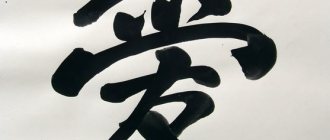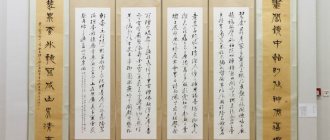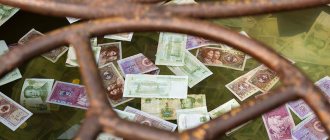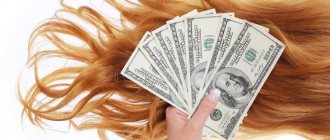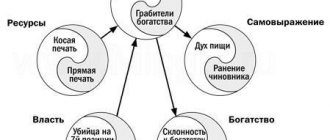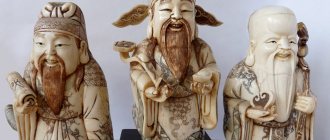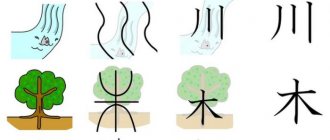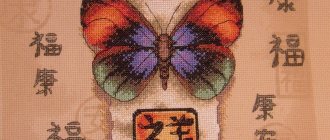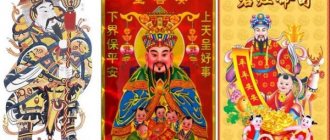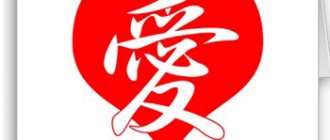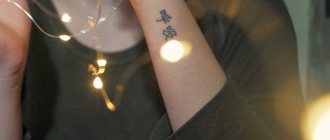On the eve of the Chinese New Year, various traditional holiday attributes appear on supermarket shelves, among which you can see red envelopes with wishes for prosperity. Red hongbao (红包, hóngbāo) envelopes are the most popular way to give a gift in China. Money is invested in such envelopes and presented to relatives, friends, newlyweds at weddings, and traditionally in organizations employees are given a holiday bonus in such envelopes.
Red envelopes are not just money, they are also a wish for well-being and prosperity. Red is the most popular and auspicious color in China, it symbolizes good luck and happiness. The envelopes are decorated brightly, congratulations are often embossed with large gold hieroglyphs.
Origin and meaning of the red hongbao envelope
In ancient times, there was a certain little demon called Sui 祟. He emerged from his underground lair on New Year's Eve and went into settlements to harm children. Sui touched the sleeping child's head with his hand, and the baby's temperature rose, after which he began to delirium. And when the temperature subsided, the child could turn into a weak-minded person.
Therefore, in order to prevent the machinations of the demon, people did not sleep on New Year's Eve, they lit candles and sat all night by their child's bed.
Once, one married couple, on the night before the New Year, strung eight copper coins on a red thread to play with their son, thus preventing him from sleeping, but the baby still fell asleep. Then the parents did not wake him up, but decided to guard their son’s sleep themselves, praying near his bed, but unbeknownst to themselves, they also fell asleep.
But God heard their prayers and sent eight fairies to protect the family; the fairies turned into coins lying under the baby's pillow.
Suddenly a strange wind arose, opened the doors and windows, and even the candle flame went out. The evil demon Sui appeared. Just as he was about to reach out and touch the child's head, eight rays of golden light suddenly burst out from under the pillow and the demon jumped out of the window in horror.
The news of this incident quickly spread first throughout the village and then throughout the country. People realized that when parents sincerely pray, God sends eight guards who, under the guise of coins, protect their children. Therefore, people began to string eight coins on a red thread and put them under children's pillows. Since then, this has become an annual custom, and the Sui monster no longer appears.
Such envelopes with money began to be called “yasuiqian (压岁钱)”, that is, money that protects against Sui.
The demon's name Sui (祟) sounds the same as the word for "year" (年) - "sui". Over time, the hieroglyph for the name of the demon in the word “yasuiqian” was replaced with the hieroglyph for “year.” And over time, coins were replaced with paper bills, and thread with envelopes.
Red color
It is no coincidence that red comes first. He is everywhere and everywhere. In Chinese culture, the color red represents good luck and happiness, as well as protection from evil spirits. There is an ancient legend that says that the terrible beast Nianshou (abbr. Nian, 年兽, niánshòu) terrorized the village on the first day of every New Year. The villagers eventually realized that Nian was afraid of the color red and loud explosions. Since then, on the eve of the New Year, the Chinese dress in red clothes, hang New Year's chunlian inscriptions on red paper, and also launch a huge number of fireworks into the sky and explode countless firecrackers.
Red envelopes in modern China - Wechat Hongbao
Now it’s even easier to congratulate your loved ones and send them hongbao!
With the development of technology, giving a red hongbao envelope has become even easier. Since 2015, WeChat, a popular messenger in China, has provided its users with the opportunity to send money hongbao in personal and public chats.
These days, young people often greet each other on WeChat by sending red envelopes through the app. Such monetary greetings become especially popular during the New Year holidays.
It is impossible to imagine the eve of the Spring Festival in China without watching the New Year's Gala Concert on CCTV. Traditional calls with congratulations have been replaced by text messages via the WeChat messenger. While watching this show, TV viewers are constantly shaking their phones to win New Year's Hongbao electronic cash envelopes.
Gate Gods
This tradition dates back to the Tang Dynasty. The Emperor had a bad dream in which a ghost was looking for him in the palace. Since the people of China at that time took ghosts very seriously, the emperor asked his two top generals to stand guard at his door while he slept. On subsequent nights, the emperor simply hung portraits of the generals in front of his door to protect himself.
This story spread throughout China, and to this day, Chinese people post images of these gate gods at the entrance of their homes during the New Year to ward off evil spirits and bring good luck.
Etiquette when receiving a red envelope
When you receive a red packet, you must first thank the giver and express your blessings to him. It is impolite to immediately open an envelope and check the amount inside, which is contrary to etiquette in Western countries, where gifts are opened immediately. If you do this, the givers will feel awkward.
When someone gives you lucky money, you shouldn't give them your package right away in return. It will feel like a simple exchange, but not like a holiday gift.
God of the Hearth
God of the Hearth 灶君, Zào Jūn, is a traditional deity widely revered in ancient China. His image is hung in the kitchen and he is believed to be the protector of the family.
At the end of the year, the God of the Hearth goes to heaven to report the family's affairs to the Jade Emperor. To prevent God from saying anything bad, his lips are smeared in the portrait to sweeten his words, and glutinous rice is placed as an offering so that his mouth is too full to speak. And at the end of the year, his image is burned so that he can return to heaven.
Red envelopes in China – Important rules
How to give a red envelope correctly?
It is important to give new, clean banknotes and not put coins in the red envelope
- Traditionally, it is customary to put new, “crispy” banknotes in the hongbao. Giving dirty or wrinkled money is bad manners. It is not surprising that a week before the Chinese New Year, long queues of people wishing to exchange old banknotes for new ones can be observed in all banks in the country.
- Do not put coins in the envelope.
- Avoid amounts such as 40 or 400. The number “4” in Chinese is synonymous with the word “death” and is believed to bring bad luck. Even sums are preferable to odd ones (except those containing fours). It is best if the monetary amount begins or ends in eights, for example, 800 yuan, it is believed that this increases luck.
- Prepare red envelopes in advance and carry a few with you throughout the 16 days of New Year's festivities (from New Year's Eve to the Lantern Festival) in case you meet someone to whom you want to give a red hongbao envelope.
- Prepare several types of hongbao (different shapes or sizes) for different amounts of money you wish to give. This way you can easily and discreetly determine which envelope to get and give, without confusing 100 yuan and 1000.
How to politely accept a red envelope
- When you are given a hongbao, accept it with both hands. It is impolite to take a red envelope with one hand.
- When you receive a red hongbao envelope, be sure to thank and wish something in return. Find out what to say when receiving a red envelope, as well as other popular greetings in China.
- Never open a hongbao immediately in front of the person who gave it to you. This should be done when no one is around, or upon returning home.
Types of envelopes according to Feng Shui
The money envelope is made of paper, which can be printed with an image of a lotus in full bloom, peony buds, golden-hued pineapples, as well as phoenixes and dragons.
The envelope can be of any size; these products have differences in purpose:
- large – for large bills;
- small ones - for good luck and fulfillment of bold desires.
Various products are inscribed with golden Chinese characters. They promise prosperity, wealth, justice. For example, packaging with the sign “Great Luck” will have a beneficial effect on the life of the hero of the occasion and the donor.
Red and gold colors were not chosen by chance - they activate favorable energy.
What various inscriptions indicate:
- “Wealth” – helps to store and accumulate banknotes. You cannot take money from the envelope, you can only report it.
- “Prosperity” – attracts a flow of monetary energy. A good stash for current expenses, you can put it in a desk drawer or safe.
- “Big Luck” is a receptacle for other people’s money. If you present banknotes to someone in it, you can soon get 2 times as much.
- The inscription “Luck, material success, health” is considered universal - these are 3 hieroglyphs with the same meanings on paper.
Sometimes you can find entire sets on sale, containing 9 products. All of them are aimed at achieving various goals related not only to material wealth. For example, they help in finding love, strengthening family relationships, and business projects.
Envelopes with images of a fire-breathing dragon, bullion bars, toads with coins in their mouths, and waterfalls help in saving money. When a person deposits the required amount there, he must comply with an important condition: not take a single note from there until the required amount is collected. You can write on paper for what purposes the savings are being made. This will help you quickly attract the fulfillment of your material desire.
How much money should you put in the red envelope?
How much should you put in an envelope so as not to offend the recipient? For some, this dilemma can be a real headache.
It all depends on your income, which will determine the thickness of the envelopes you hand over. On average, in large cities the following amounts are donated:
- Senior people (parents and grandparents): 500–2000 yuan;
- Teenagers (schoolchildren and students) (relatives and colleagues, children of close friends): 50–200 yuan;
- To your children: from 100 yuan and up to the amount you deem necessary;
- Employees: 100–1000 yuan (awarded on the last working day before Chinese New Year);
- Other children: 10 or 20 yuan.
The closer the family ties, the higher the amount of the gift; for the closest ones it can reach up to 6,000 yuan.
Chinese lanterns
During Chinese New Year, lanterns are everywhere. They are always red in color and round or oval in shape. They can be made of paper or fabric, and decorated with black or gold calligraphy, and sometimes simply with symbols of prosperity.
Good wishes on Chinese New Year lanterns relate to happiness, peace, good fortune and prosperity.
The New Year holiday ends on the 15th day of the first month according to the lunar calendar. On this day, Yuanxiaojie, or Lantern Festival, hundreds of thousands of lanterns rise into the sky, creating an unforgettable spectacle.
Who is given the red hongbao envelope in China?
Offering hongbao means sharing blessings. Once you start earning money, it means it's time to give red envelopes to others. As a rule, the amount of money depends on your income. However, if you are not married, then it is not necessary to give hongbao to others.
Grandparents always give red envelopes to their grandchildren
Red hongbao envelopes are traditionally given to children for Chinese New Year. For many Chinese, hongbao is associated with that magical feeling of the holiday, memorable from childhood. On New Year's Eve or on the holiday itself, parents prepare red envelopes and put them in their children's pockets. In large cities, hongbao are given only to one's own family, while in some rural areas it is customary to give red envelopes to every child one meets during the New Year period.
Your close relatives (parents and grandparents) will continue to give you red envelopes even when you get married, this is their concern for you and blessing.
How much money should I put in the red hongbao envelope?
On Chinese New Year, children find hongbao in their pockets.
- Seniors (especially your parents and grandparents): 500–2000 yuan;
- For teenagers and those younger, especially schoolchildren and students (relatives and colleagues, children of close friends): 50–200 yuan;
- To your children: from 100 yuan and up to the amount you deem necessary;
- Your employees: 100–1000 yuan (awarded on the last working day before Chinese New Year);
- For other children: Prepare a number of small red envelopes with 10 or 20 yuan enclosed for the children of your friends whom you see during the New Year period.
Fish
Fish is a very common theme in Chinese Spring Festival decorations, mainly because of the overall blessing during the New Year - "may you have fish every year" 年年有鱼, nián nián yǒu yú. In Chinese, the word for fish, yu, is similar to the word for abundance.
Thus, when you wish for a Chinese to have fish every year in China, you also want him to never have a shortage of food and money.
Therefore, fish is a common decoration not only during the Chinese Spring Festival, but also for anyone hoping for a little “abundance” in their lives.
Chinese Hongbao: Everything you need to know about the lucky red envelope
Red envelope or in Chinese - Hongbao
Chinese New Year is just around the corner.
And this means that red envelopes, the so-called 红包 hongbao (红 = red, 包 = envelope, package) will be visible everywhere. Whether you receive or give red envelopes of good luck, this article contains everything you need to know about traditional Chinese hongbao.
What are red envelopes?
Red envelopes, 红包 (hóngbāo) in Chinese, are a popular gift during important festivals and holidays in China and some other Asian countries.
Red envelopes are given at weddings, graduations, birthdays, and as a work bonus, but are especially common during the spring holiday (Chinese New Year).
Who gets Hongbao?
Chinese hongbao
Red hongbao envelopes are traditionally given to children and young people for Chinese New Year. They receive such a gift from their parents, relatives, family friends or neighbors.
Married couples can give hongbao to single people, and older people can give hongbao to young people.
Some companies congratulate their employees with hongbao.
Once an adult starts earning money, he will have to give money not only to his children, but also to his parents and grandparents to show respect and gratitude.
The color red symbolizes good luck and prosperity in the new year, and people also believe that it wards off evil spirits.
But the best thing is that these envelopes contain money.
How much money should you put in Hongbao?
There are some rules to keep in mind when filling out envelopes.
As a rule, they give new, “freshly withdrawn” banknotes from an ATM. Giving old banknotes or coins as a gift is bad form.
How much money should I put in a hongbao?
All sums with the number four should be avoided.
The number four in Chinese 四 (sì) sounds similar to 死 (sǐ), which literally means death. This is not at all the association you would want to evoke during the holidays.
Numbers that are multiples of eight, such as 80 or 800 yuan are great, since the number eight is traditionally considered lucky in China.
If you want to give your partner a hongbao, note that lovers in China often give each other 520 yuan because the numbers five, two and zero in Chinese sound a little like “wǒ ài nǐ”, which translates to “I love you.” "
By the way: if you are the recipient of a red envelope, you should not open it right away. You just need to accept it with both hands and say thank you. This custom applies to gifts in general. For example, at a wedding or birthday, gifts are opened only after the holiday and without the presence of guests.
What is the origin of Hongbao?
Origin of Hongbao
It is not entirely clear where the tradition of giving red envelopes during holidays or special occasions came from.
This may be due to a custom dating back to the Qin Dynasty (221–206 BC).
At that time, people often used coins for payment, and older people would string these coins onto a red thread for good luck and protection from illness and death.
Such red threads with coins were called 壓祟錢 (yāsuì qián) "money that drives away evil spirits" (yāsuì = control evil spirits, qián = money). Later, yāsuì qián was replaced by red envelopes, and its meaning was slightly modified by the homonym 歲 (suì = old age).
Today, money given in red envelopes is still called yāsuì qián, meaning “money from old age.”
The Legend of the Red Envelopes
China Street on New Year's Day
According to legend, in ancient times there was a terrible demon called 祟 Suì (evil spirit).
This demon was completely black except for his hands, which were white.
Every year on New Year's Eve, a demon came to touch the sleeping child's forehead three times.
In a state of shock, the child will cry and get angry. Later he will develop headaches and fever.
When these symptoms disappear, the child will become mentally retarded. To protect their children and ward off demons, parents left the lights on and stayed up all New Year's Eve.
Perhaps it is for this reason that in the modern world there is a tradition of "staying awake on New Year's Eve" called 守岁(shǒusuì), originally written as "守祟", "waiting for Sui". It was later replaced by the homophonic symbol "岁" (suì). "year".
One New Year's Eve in Jiaxing, Jiangsu Province, there were two very elderly parents who were afraid that the Sui demon would harm their son. They gave the child eight coins and red paper to wrap his money in.
The child packed and unpacked the coins over and over again until he fell asleep.
Red is considered the color of luck, energy and brightness in Chinese tradition and is also believed to ward off evil, so the couple placed eight coins next to their baby's pillow.
When everyone was asleep, a demon appeared and approached the child's bed, but when he reached out his hand to touch the child's forehead, rays of golden light burst out from the red paper. Frightened by the bright light, the evil demon ran away.
This story spread throughout their village, and all the parents began preparing their red envelopes (literal translation: 红包(hóngbāo)) to protect their children.
Cutting patterns from paper
Jianzhi (paper cutting) is a common tradition during the Spring Festival. The tradition began thousands of years ago as a way of worshiping the gods.
Paper cutting - jianzhi - is one of the traditional folk arts and crafts of China, which was recently classified as a world cultural heritage by UNESCO.
The most common themes for carving are the symbol of fu (happiness), yu (fish) and the zodiac animal of the current year. Paper cuttings are also common at weddings and other Chinese celebrations. The cutting is almost always done from red paper.
